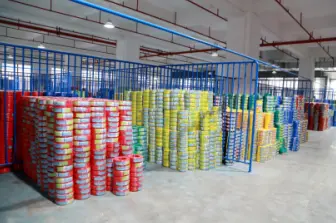Fire-Resistant Control Cables: Guardians of Safety in Rail Transit
With the continuous development of cities and the ongoing growth of the population, rail transit has become a key means to alleviate urban traffic congestion and improve travel conditions for residents due to its efficiency, punctuality, and large capacity. In the rail transit system, fire-resistant control cables play an indispensable key role.
The Role of Fire-Resistant Control Cables in Emergency Evacuation
Rail transit locations are usually densely populated and have extremely high safety requirements. In the event of a fire or other emergencies, traditional wires and cables may produce a large amount of smoke and toxic harmful gases, greatly expanding the hazard of the fire and complicating evacuation and emergency handling. Fire-resistant control cables can continue to operate normally for a certain period while flames are burning, ensuring power supply and signal transmission for key equipment, thus providing strong support for personnel evacuation and emergency handling.
Characteristics of Fire-Resistant Control Cables
Fire Resistance: The fire-resistant control cables in the rail transit industry have excellent fire resistance. Under fire conditions, they can maintain continuous circuit operation for 90 minutes or 120 minutes, enhancing the reliability and stability of the metro system.
Flame Retardancy: Fire-resistant control cables have the characteristic of preventing flame spread. In the event of a fire, they buy precious time for evacuation and firefighting, reducing casualties and property loss caused by the fire.
High Mechanical Performance: The rail transit industry has high requirements for the mechanical performance of cables, as they may be subjected to stretching, bending, compression, and other external forces during installation and use. Cables with high mechanical performance can resist these forces, ensuring their integrity and stability.
Low Smoke: In the event of a fire, the low smoke characteristic of fire-resistant control cables can reduce smoke generation, providing better visibility for passengers and rescue personnel, facilitating evacuation and rescue operations.
Halogen-Free: The halogen-free characteristic can reduce the release of toxic and harmful gases during a fire, decreasing harm to human bodies. Moreover, the halogen-free feature reduces environmental pollution.
Oil and Acid-Alkali Resistance: In the rail transit system, cables might come into contact with various oils and acid-alkali substances. Thus, the fire-resistant control cables are equipped with oil and acid-alkali resistance to ensure normal operation in harsh environments.
Ozone Resistance: Ozone is a strong oxidizer that can damage the insulation materials of cables. Therefore, cables in the rail transit industry need to have ozone resistance to ensure long-term stable operation in an ozone environment.
Low and High-Temperature Resistance: Since the rail transit system may operate in different temperature environments, cables need to possess low and high-temperature resistance to ensure normal operation under extreme temperature conditions.
DC Voltage Resistance: Some equipment in the rail transit system may use DC power, thus cables need to have DC voltage resistance to ensure safe operation under DC power.
In summary, fire-resistant control cables play a crucial role in ensuring the safe operation of rail transit, with the aforementioned characteristics. When selecting fire-resistant control cables, it's essential to understand the material selection and production process, choose compliant and high-quality manufacturers, and comprehensively consider the needs of the rail transit system, the electromagnetic environment, and cost budget. Only by doing this can the appropriate fire-resistant control cables be selected to safeguard the safe operation of rail transit.
 English
English  français
français  Deutsch
Deutsch  العربية
العربية  tiếng việt
tiếng việt  ไทย
ไทย  čeština
čeština  Indonesia
Indonesia  Eesti
Eesti  български
български  slovenčina
slovenčina 



